Location, Menu, Training All Factor In
Once considered an amenity, hotel restaurants and lounges are now, for the most part, identified as profit centers. Some hotels do a great job on food and beverage, and reap benefits such as increased gross operating profit per available room, guest loyalty and local market support. Other hotels do a poor job at managing restaurants and lounges and making them appeal to hotel guests and locals. In my experience, hotel food services are either well or poorly managed; there is no in-between.
Location and Appeal
I am a foodie. When traveling for business or pleasure, I tend to visit highly rated or new and interesting local restaurants. For guests to patronize a hotel’s restaurant and lounge, they need a compelling reason to do so.

If hotel guests can’t see the restaurant or lounge when checking in, they likely won’t seek it out. If it is visible, it should be enticing. At first glance, it should communicate that you can enjoy a meal, beverage or snack in an appealing atmosphere (what appeals to travelers varies; your market segmentation will provide clues to what might work for you). If the lounge or restaurant looks like countless other hotel food-service outlets, it is not attracting guests. If the outlet is not visible, guests have to be informed of the location and enticed to visit. If you have a great dining room or lounge, ensure guests know it exists. Photos in elevators, for example, should show the outlet as opposed to a menu item or an ad for Sunday brunch (especially if my stay doesn’t include Sunday morning).
Locals are often the key to success for hotel restaurants. Guest capture rates are usually good for breakfast, weak at lunch (unless an in-house group is on their own for lunch) and “OK” at dinner. Ideally, the restaurant or lounge is not only visible from the lobby, but also has an exterior entrance and ample parking. If that parking is paid and most competing restaurants and lounges have complementary parking, make sure parking is validated for restaurant guests and this policy is communicated in the area. A local marketing strategy is required to entice locals to the outlet, ideally during periods when hotel guest demand is low.
Menu
The location and ambiance of a food service outlet is important. The menu is also a key success factor.
If your all-day restaurant and lounge’s menu could be the menu at any similar hotel in the country, you will only attract patronage from those who want the convenience of an in-hotel outlet. And even for guests that want convenience, apps like Uber Eats provide an option to order from all local restaurants for delivery to the hotel. Create a menu that will attract interest. Add a wood-fired pizza oven. Have action stations such as omelet/stir fry/pasta stations where a guest can select ingredients. Pay homage to the local area with local delicacies or dishes using local ingredients. Provide guests and locals a reason to patronize your outlets.
Too often, hotels follow brand standards and the resulting food and beverage outlets are unappealing. You have the ability to design a menu that both entices visitation while meeting those standards.
Often during budget meetings, when food-and-beverage cost is too high, the answer is to raise prices. I often shake my head at how much hotels charge for breakfast, which is often a buffet with lukewarm hot items, and operators wonder why breakfast capture rates are eroding. People expect to pay a premium to eat in a hotel, especially for room service; however, an increasing number of guests are seeking alternatives when pricing is too high (and that important local market is less willing to visit). Even if you are a remote location with limited nearby options, relatively high pricing will affect loyalty to guests that are feeling “gouged.” Guests and locals must perceive value (and that high priced breakfast with lukewarm eggs does not cut it).
Management
To be profitable, food and beverage managers must ensure food & beverage and labor cost control practices are implemented. By controlling costs, outlets can be profitable without raising prices. If cost of sales is allocated across all outlets based on revenue, your costs are not controlled. If your food and beverage manager cannot explain the variance between actual and theoretical cost of sales, they are not controlling costs. If the outlet schedule is the same every Monday, labor costs are not controlled.
Service
Service is key. Training and rewarding servers and bartenders for providing great service will increase loyalty to your hotel and its food and beverage outlets.
In conclusion: Your food service outlets can be a great asset to your hotel. But for this to happen, you have to pay attention to the details. Sure, the room division generates greater revenue and a greater contribution; however, if you calculate revenue per square foot, you will likely reexamine your focus on the Food and Beverage Department. Those hotels that do food service well reap many rewards.
Jeff Dover is President of fsSTRATEGY, a consulting firm specializing in strategic advisory services for the hospitality industry, with an emphasis on food and beverage. Jeff is a Certified Management Consultant and a member of the International Society of Hospitality Consultants.


